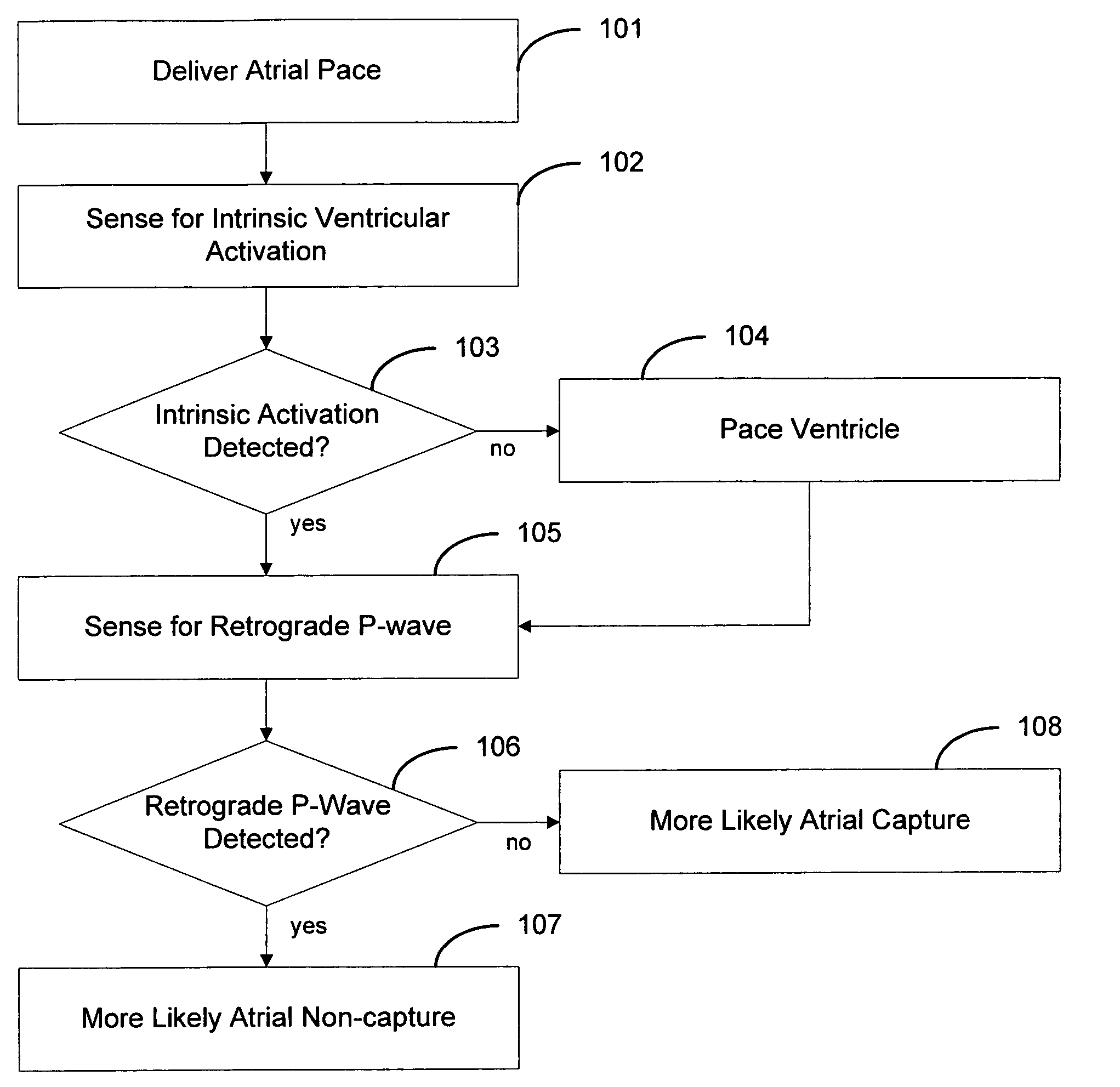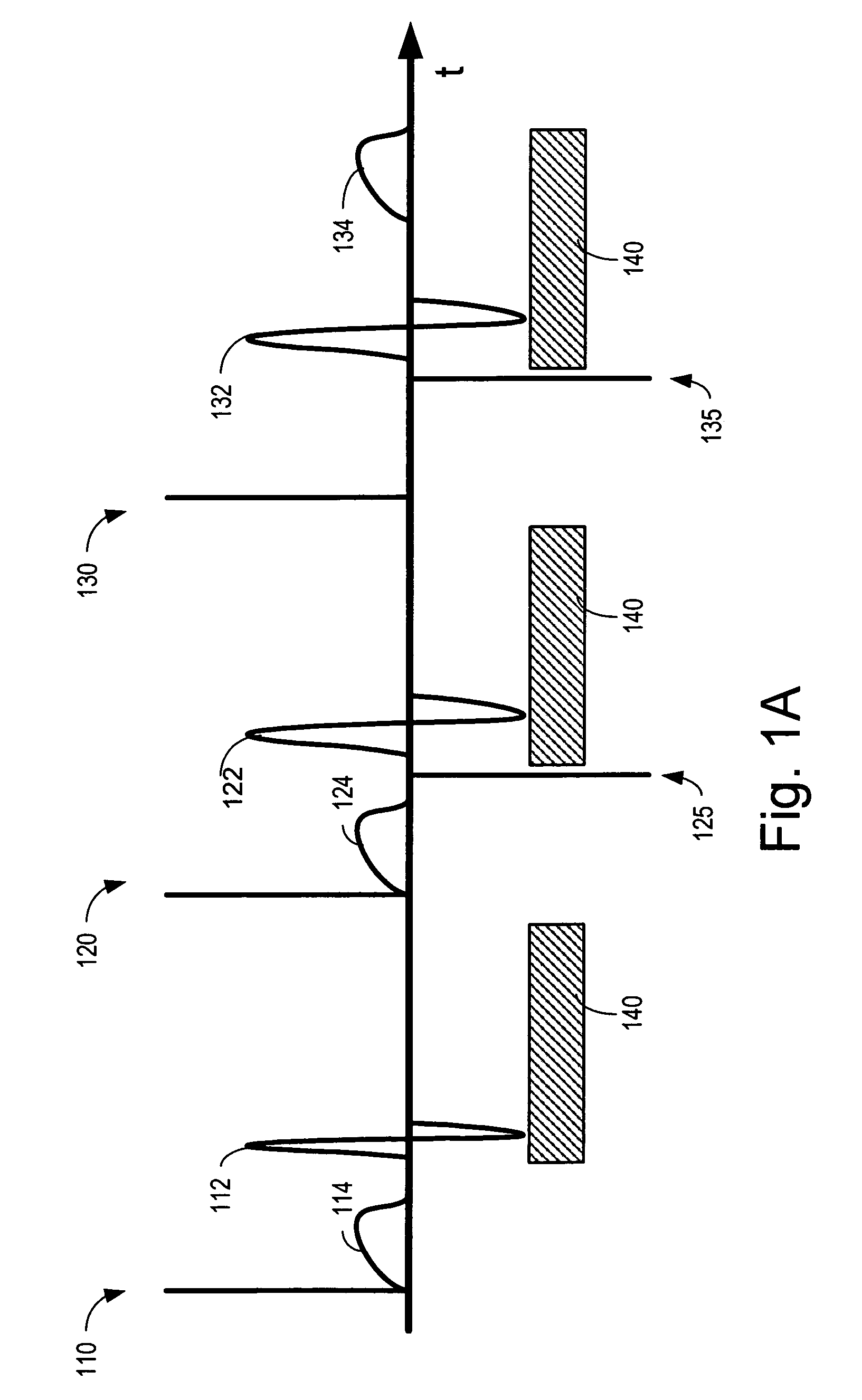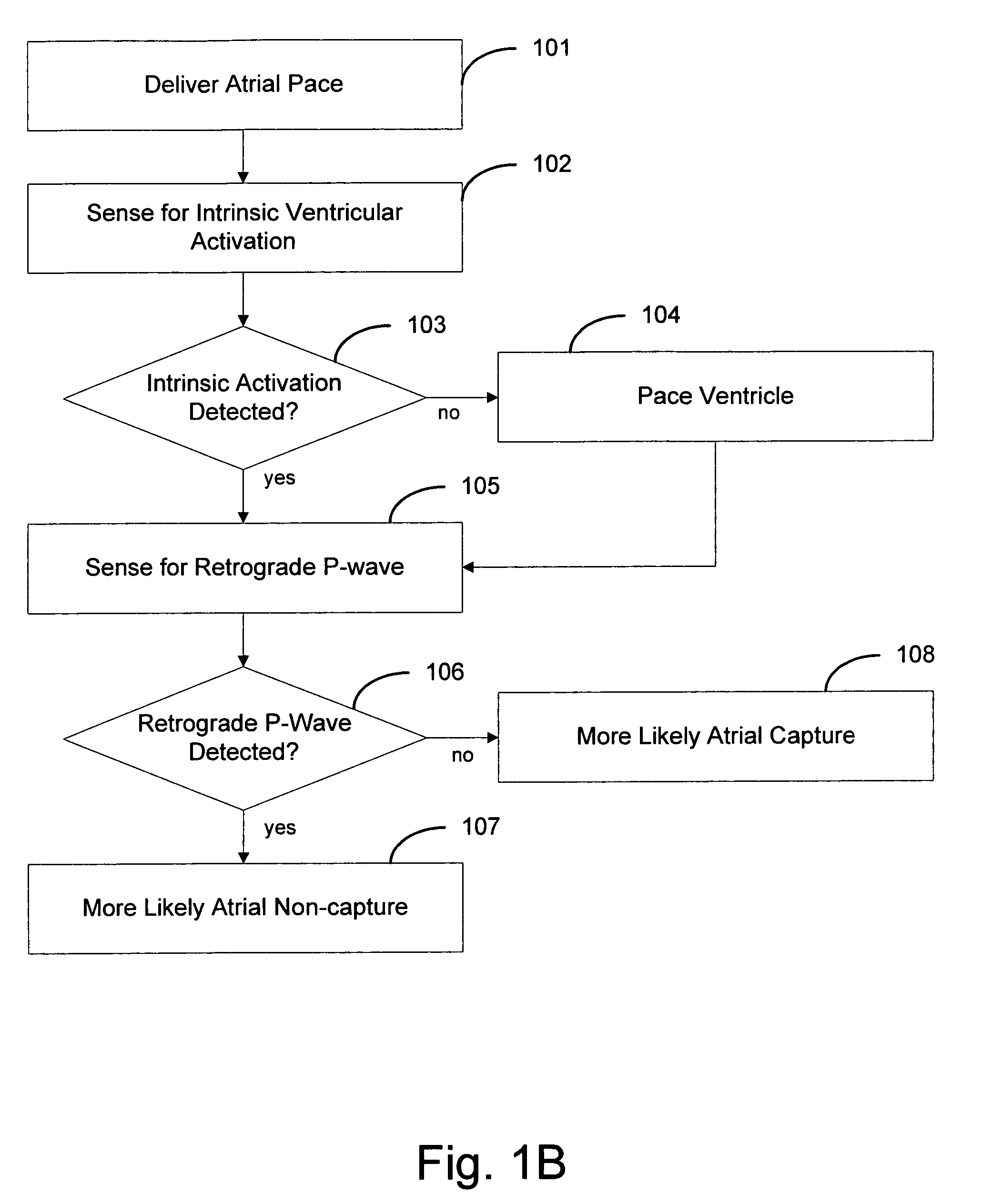Atrial capture verification
a technology of atrial capture and verification, applied in the direction of electrotherapy, heart stimulators, therapy, etc., can solve the problems of ineffective pacing, discomfort, and reduced pumping efficiency
- Summary
- Abstract
- Description
- Claims
- Application Information
AI Technical Summary
Benefits of technology
Problems solved by technology
Method used
Image
Examples
Embodiment Construction
[0027]In the following description of the illustrated embodiments, references are made to the accompanying drawings forming a part hereof, and in which are shown, by way of illustration, various embodiments by which the invention may be practiced. It is to be understood that other embodiments may be utilized, and structural and functional changes may be made without departing from the scope of the present invention.
[0028]After delivery of a pacing pulse to a heart chamber, various cardiac responses to the pacing pulse are possible. In one scenario, the pacing pulse may generate a propagating wavefront of depolarization resulting in a contraction of the heart chamber. In this scenario, the pacing pulse is said to have captured the heart chamber. Capture of the heart chamber may occur if the pacing pulse has sufficient energy and is delivered during a non-refractory period. If the pacing pulse does not produce contraction of the chamber, the cardiac response is referred to as non-capt...
PUM
 Login to View More
Login to View More Abstract
Description
Claims
Application Information
 Login to View More
Login to View More - R&D
- Intellectual Property
- Life Sciences
- Materials
- Tech Scout
- Unparalleled Data Quality
- Higher Quality Content
- 60% Fewer Hallucinations
Browse by: Latest US Patents, China's latest patents, Technical Efficacy Thesaurus, Application Domain, Technology Topic, Popular Technical Reports.
© 2025 PatSnap. All rights reserved.Legal|Privacy policy|Modern Slavery Act Transparency Statement|Sitemap|About US| Contact US: help@patsnap.com



